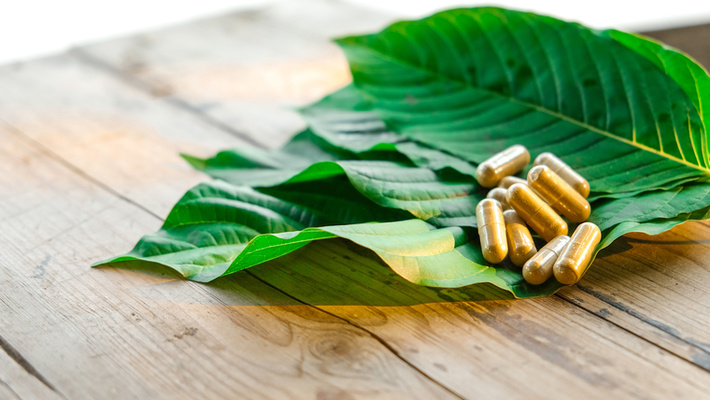
Kratom is an herb that more than 15 million Americans are using to treat pain and opioid addiction. It’s also helpful for anxiety, insomnia and for increasing energy. It’s grown in Southeast Asia, where it has been used by natives for hundreds of years. Many pain patients insist kratom has significantly improved their quality of life and others, especially those who have used kratom to withdraw from opioids, say it has literally saved their lives. Yet the FDA has been frantically trying to ban it for many years. When the FDA failed to get kratom banned in the U.S., they went to the World Health Organization and asked them for an international ban.
Last month the WHO’s Executive Committee on Drug Dependency (ECDD) voted 11-1 to simply continue to monitor data on health impacts of kratom over the next two to three years, rather than institute strict controls. Members found “insufficient evidence” to warrant any action at this time.
The committee based its decision on a scientific review of the benefits and risks of kratom. 80,000 people also submitted comments to the committee about their experiences with the herb.
That hasn’t stopped the FDA from continuing its efforts to keep kratom from the American public.
Previous and ongoing efforts to ban kratom in the United States
In 2016, the Drug Enforcement Administration proposed temporarily placing kratom into Schedule 1 of the Controlled Substances Act, a classification for substances with no known medical benefits and high potential for abuse. This would have made the use of kratom illegal. But the agency backtracked after a public outcry and pressure from some members of Congress. The DEA then asked the FDA to expedite a scientific and medical evaluation instead.
In November 2017 the FDA issued a warning to consumers against using kratom, saying that there have been 36 deaths related to the herb. Scott Gottlieb, FDA Commissioner at the time, stated that kratom has similar risks of abuse, addiction, and death as opioids. This statement was ludicrous because the purported deaths from kratom occurred over a period of several years and were fewer than occurs in one day as a result of opioid overdoses. The National Institutes on Drug Abuse (NIDA) tested the FDA claims that kratom is associated with deaths, and they concluded those claimed deaths were actually caused by poly-drug users who abuse dangerous drugs or were caused by people who used an adulterated kratom product.
In 2018, the FDA published a report claiming that FDA scientists had “analyzed the chemical structures of the 25 most common compounds in kratom and concluded that all of the compounds share structural characteristics with controlled opioid analgesics, such as morphine derivatives. They also found that compounds in kratom bind strongly to mu-opioid receptors, comparable to opioid drugs”. This study and its conclusions have been widely criticized as misleading and unscientific. Other substances, such as Imodium, an over-the-counter remedy for diarrhea, also bind to opioid receptors but are not classified as opioids.
About 95% of kratom comes from Indonesia. The FDA reportedly played a role in the Indonesian government’s decision to ban the export of kratom as of 2022. Kratom advocates in Indonesia and the U.S. have convinced the Indonesian government to delay the export ban at least until 2024. There are hopeful signs that the Indonesian government will abandon the export ban completely before that time.
The FDA has also seized shipments of kratom to the United States on multiple occasions with no rationale other than that it is kratom.
In addition, according to one kratom company owner I spoke with recently, the FDA has intensified its harassment of American distributors of kratom in recent weeks, in apparent response to their unsuccessful efforts to get an international ban from WHO.
Also, thanks to FDA efforts, six U.S. states have banned kratom, including Alabama, Arkansas, Indiana, Tennessee, Vermont, and Wisconsin. Wisconsin is currently considering reversing its ban.
Why is the FDA so determined to ban kratom?
So, who is the FDA serving in their biased, unscientific efforts to ban kratom? It is certainly not the patients who have been relying on it for pain relief and easing opioid withdrawal.
Kratom is a natural substance that cannot be patented and is already a significant competitor to many pharmaceutical products. The FDA’s real concern is protecting the pharmaceutical companies’ bottom line.
This is far from an isolated instance of the FDA going after a natural product to protect the pharmaceutical companies’ profits. It’s how the FDA operates on a daily basis.
Related Articles:
Kratom: Miracle or Menace for Chronic Pain Patients?
New Study Finds Kratom Effective for Pain, Addiction
Kratom Helped Them More Than Opioids and It May Soon Be Banned
Suppression of Alternative Medicine is Killing Us
Cindy Perlin is a Licensed Clinical Social Worker, certified biofeedback practitioner, chronic pain survivor, author of The Truth About Chronic Pain Treatments: The Best and Worst Strategies for Becoming Pain Free and the creator of the Alternative Pain Treatment Directory. She is in private practice in the Albany, NY area, where she has been helping people reach their health and wellness goals for over 27 years. You can schedule a phone consultation with Cindy HERE











Comments